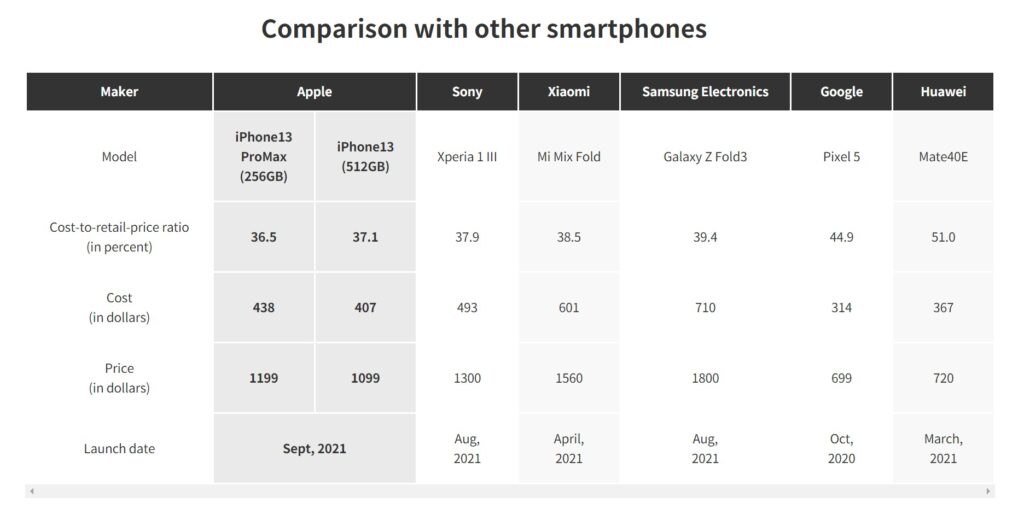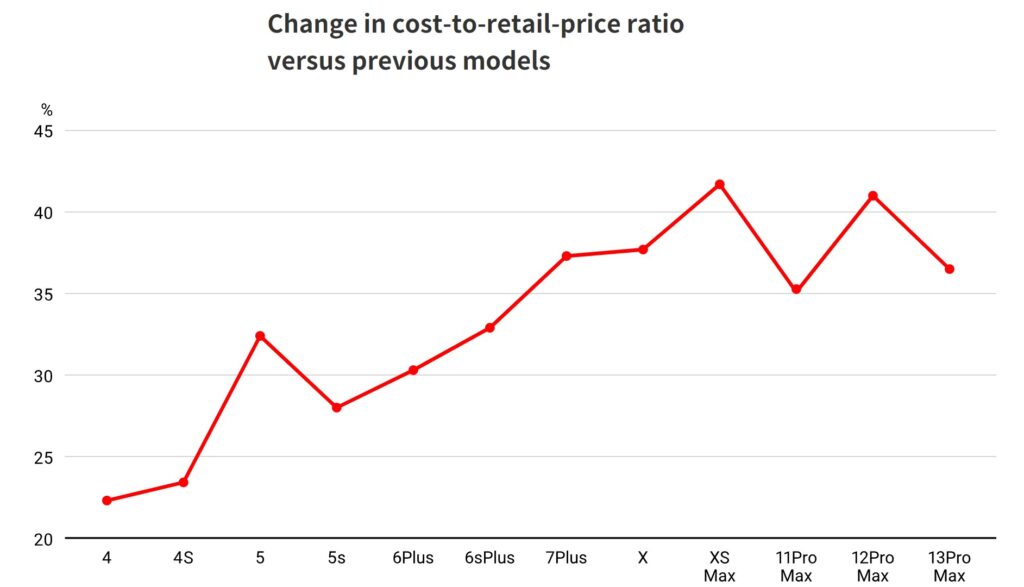The iPhone 13 now has a cost-to-retail price ratio for its components of around 37%, and Apple is sacrificing profits in order to make its phones better and offer more for less.
The report from Nikkei Asia and Financial Times (via iMore) reveals that the OLED display of the iPhone 13 Pro Max alone costs $105 for Apple – the most expensive component. This is followed by the camera module of the device that costs $77. The Apple A15 Bionic chip costs around $45. In total, the iPhone 13 Pro Max (256GB variant) costs around $438 to make, or around 36.5% of the phone’s retail price.

The cost ratio, however, is still a bit low when pitched against other smartphones with similar prices. Samsung’s Galaxy Z Fold3 has a cost ratio of 39.4% while Huawei’s Mate 40E has a cost ratio of 51.0%. This indicates that Apple relies heavily on the strength of its brand for profitability.
Still, iPhone component costs have indeed grown sharply in the past 10 years, with almost a consistent YoY increase. Take the iPhone 4S that had a retail cost ratio of just 23%. The device at the time cost $749. In contrast, the iPhone 13 sits in the 35-40% cost ratio range. Its camera module alone costs 10 times as much as the one on the iPhone 4.

But while component costs can be figured out relatively easily, other costs such as labor, advertisement, R&D, shipping, and packaging, are much harder to ascertain. Add all these to the cost ratio and it’s bound to rise dramatically. Hence, components alone don’t tell us exactly how much Apple makes from the sale of every iPhone unit, so that’s one thing to consider.
The Apple iPhone 13 series was launched last month with the new A15 Bionic chip, multiple camera upgrades, a 120Hz ProMotion display, and much more.
RELATED:
- Apple releases support document that addresses issues with MacBook Pro’s notch
- Apple retains its iPhone loyalty rate that surpasses 90%: CIRP
- Apple 2021 MacBook Pro finally brings ‘DIY-friendly’ battery replacement design: iFixit
- Apple suppliers using clean energy have doubled in just a year in an effort to achieve carbon neutrality
- Google Tensor gets crushed by Apple A15 in machine learning despite being a ML-centric chip







